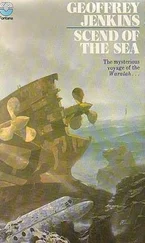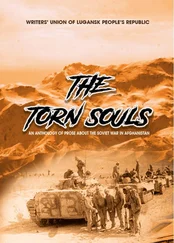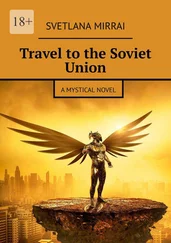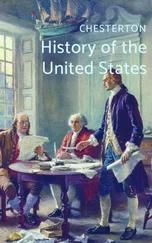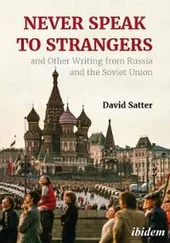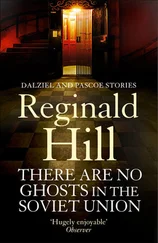In this controversy we see Lenin on the opposite side from the one he took in October. Then he had been an internationalist in perspective, trusting to the revolutionary élan of the workers all over the world. Now he became distrustful of any working-class revolutionary spirit not guided by the Bolshevik Party (as in What is to be Done? so many years before) and retreated into the one ‘socialist fortress’. The party eventually accepted his arguments, and Soviet Russia signed a treaty at Brest-Litovsk, acceding in full to the German demands. Much flowed from that decision, especially the creation of a relatively conventional army (see below) and the abandonment of ‘open diplomacy’. One might even see here the first glimmerings of ‘socialism in one country’, later to be developed by Stalin. However that may be, Germany’s subsequent defeat by the Western Allies rescued Lenin from the most damaging consequences of his decision: the Germans withdrew from the occupied territories after November 1918.
The Left Socialist Revolutionaries agreed with the Left Communists on this issue and resigned from the government in indignation, calling the Brest-Litovsk Treaty a ‘betrayal’. Thenceforth the Bolsheviks exercised literally ‘one-party rule’. As if to mark this break, they renamed themselves the Communist Party (in memory of the Paris Commune).
The Bolsheviks’ method of seizing and consolidating power led naturally to civil war. This was something Lenin had always accepted. He had repeatedly urged that the First World War should be turned into a class struggle or ‘international civil war’. The same logic underlay his determination in 1917 to shun all agreements with other parties, even from the socialist camp, and to promote a violent seizure of power single-handed.
It took some time, however, for the various anti-Bolshevik forces to grasp the reality of the situation, and to retrieve themselves from their initial reverses. Senior officers from the Imperial Army made their way to the Don Cossack territory in the south, where they tried to assemble an anti-Bolshevik Volunteer Army. Because of the divisions among the Cossacks, however, it took them a long time to secure a base area. Long before they did so, an opportunity for anti-Bolshevik activity was created in quite another part of Russia, namely Siberia. Following the termination of hostilities on the German front, the Czech Legion was being evacuated on the Trans-Siberian Railway, when fighting broke out between them and Red Guards at Chelyabinsk. Using the telegraph system, the Czechs managed to gain control over the entire length of the railway. Since this is the one vital artery of Siberia, that meant the whole of that enormous territory, together with the Urals and part of the Volga basin, became an area where anti-Bolshevik forces could gather.
The first to take advantage of the situation were the Socialist Revolutionaries. Since the October revolution they had been uncertain and divided about how to meet the Bolshevik threat. On walking out of the Second Congress of Soviets they had declared the seizure of power ‘a crime against homeland and revolution, which means the beginning of civil war’. But they had been reluctant to back this declaration with actions. One inhibiting factor was the fear of finding themselves along with the ‘Kornilovites’ on the side of counterrevolution: they still felt the lingering ties of socialist brotherhood with the Bolsheviks. All the same some Socialist Revolutionaries, without the approval of their Central Committee, did organize the assassination of the German ambassador and attempted to seize power by a coup in the new capital, Moscow, in July 1918. This coup was supplemented by an armed rising in Yaroslavl and one or two other northern towns, timed to coincide with an Allied landing at Arkhangelsk. The landing, however, was postponed, and the risings put down.
Taking advantage of the Czech revolt, the Socialist Revolutionaries set up a government at Samara on the Volga, which they called the Committee of Members of the Constituent Assembly, or Komuch . As their title implied, they wanted to reconvene the Constituent Assembly on non-Bolshevik territory. They saw themselves as a ‘third force’, between the emerging ‘Red’ and ‘White’ orientations. Their programme declared, for example, that the land was ‘irrevocably the property of the people’, which was not to the taste of most of the generals. In Omsk a Provisional Government headed by the Kadet, P. Vologodsky, promised, on the contrary, that all nationalized property, including land, would be restored to its former owners. The two governments eventually reached a compromise and formed a joint Directory, but this in its turn was overthrown by officers and Cossacks, who objected to its (moderately) left-wing programme, and installed Admiral Kolchak as supreme ruler and ‘commander-in-chief of all the land and naval forces of Russia’. In this way political uncertainty and disunity undermined the efforts of the Whites, while the attempts to found a ‘third force’ all failed, since such a force always needed support from army officers, which meant the Whites.
The emerging White armies did have some degree of foreign support, from Russia’s former allies, especially Britain and France. The effectiveness of this support should not, however, be exaggerated. The truth was that Allied governments, though worried by the incipient power vacuum in Russia, and by the growth of communism there, were not sure what they wanted to achieve, nor of the best means for doing so. In the summer and autumn of 1918 the main aim was to get the Russians back into the war against Germany. When that objective lapsed in November 1918, some Western politicians still took the view that it was necessary to rid Russia of Bolshevism, which might otherwise sweep Europe like the plague (Trotsky’s vision in reverse). The majority, on the other hand, felt that after a long war the first priority must be to bring the troops home at last, and that in any case anti-communism was a policy that would split public opinion at home. Some British soldiers, indeed, mutinied. For that reason, most Allied troops left Russia during 1919, though the Japanese stayed on longer in the Far East, where they had more durable geopolitical interests.
Perhaps the most important contribution the Allies made was to supply the Whites with arms, ammunition and equipment, without which they could scarely have mounted an effective military challenge to the Communists. On the other hand, they never committed enough men to make a decisive difference to the outcome of the war, and, by committing what they did , they opened the Whites to the charge of being unpatriotic, of encouraging foreigners to intervene in Russian affairs. They also gave the Communists impeccable grounds for believing, as Lenin had warned them, that the imperialists were out to crush the young Soviet state. The foundations of many a myth were laid by the Allied intervention.
The Whites were able, at any rate, to mount a very serious threat to the Soviet Republic. Two moments of crisis stand out in particular. The first was in August 1918, when the Czechs and other White forces captured Kazan, on the Volga. This was some four hundred miles from Moscow, but there was no significant force of the infant Red Army ready to interpose itself, so that the capital was very vulnerable. Trotsky, now commissar for war, rushed in what was to become his famous armoured train, to assemble a force to defend the town of Svyazhsk, on the road to Moscow. He succeeded in doing so, and in recapturing Kazan. This was when he issued his command, ‘I give a warning: if a unit retreats, the commissar will be shot, then the commander.’ This crisis gave the decisive impulse towards the creation of a full-scale Red Army, as well as to the declaration of the Red Terror (see below, page 70).
Читать дальше

